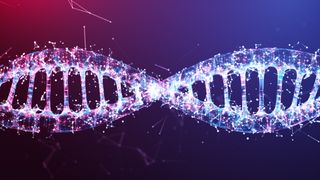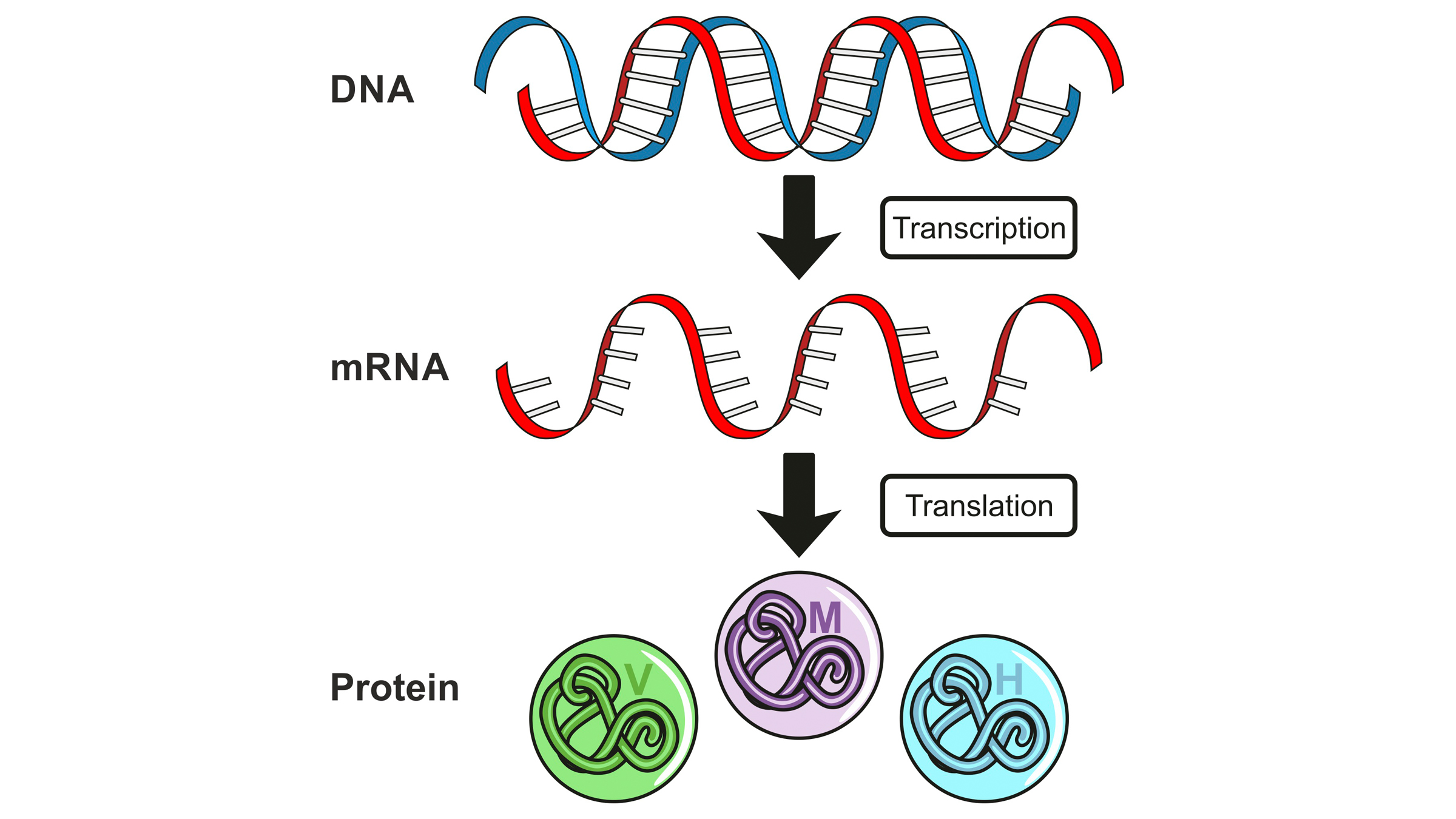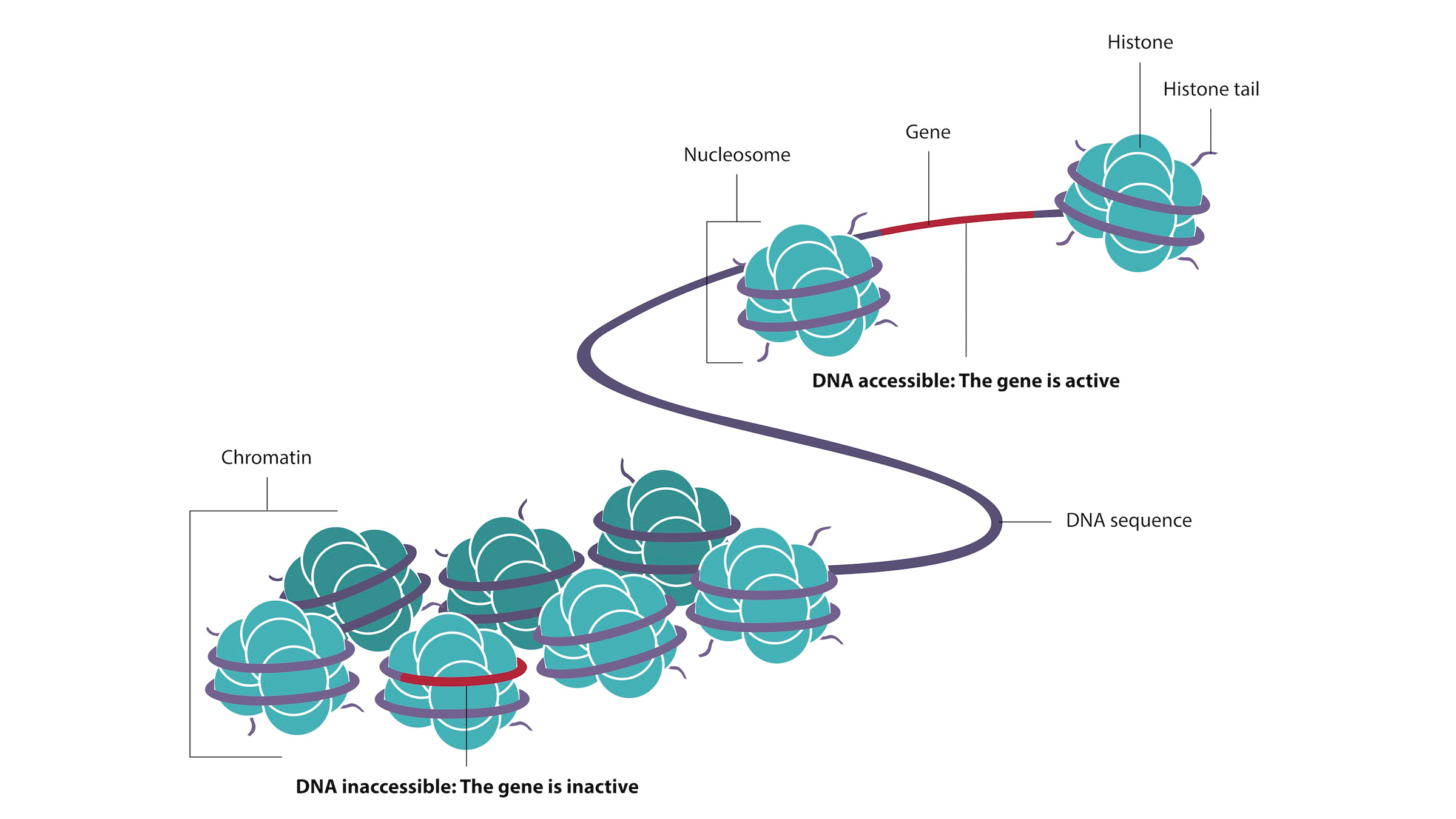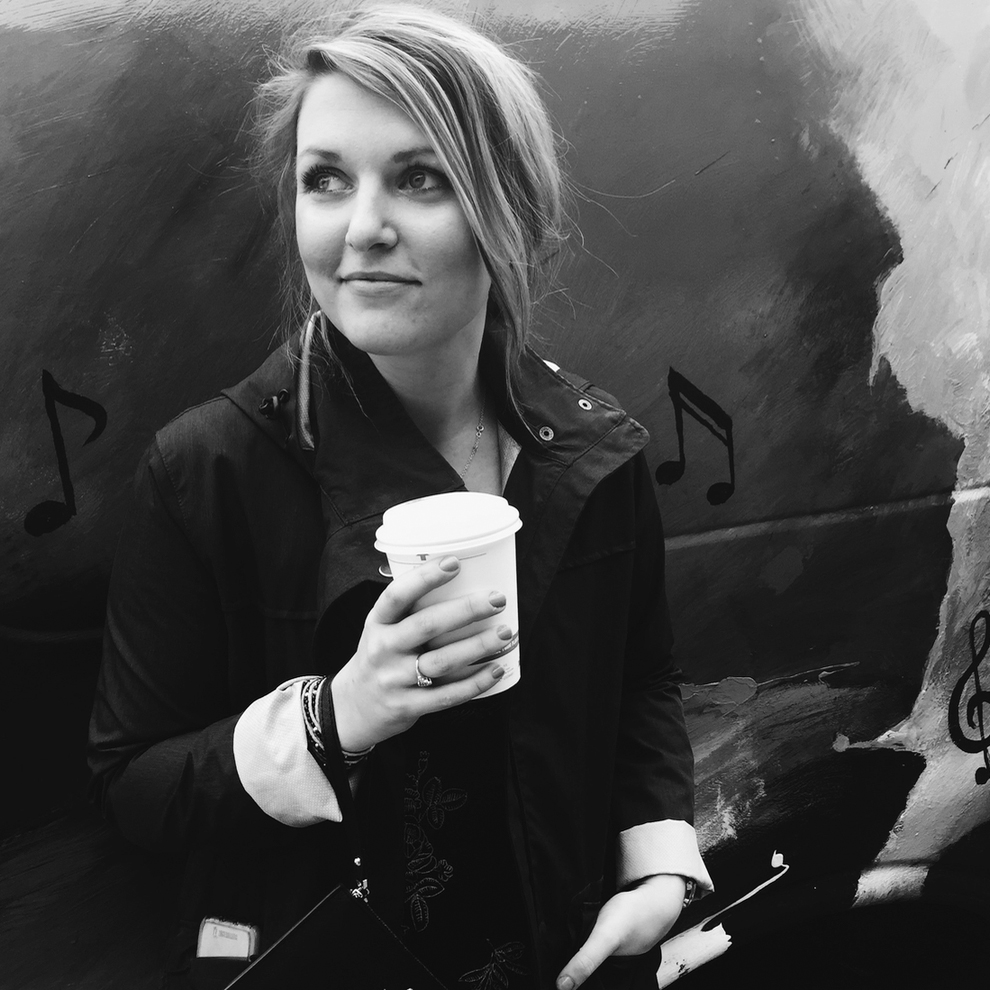how does dna control the function of a cell
How does DNA know which subcontract to neutralize each cell?

A simulate of your DNA is harbored in the nuclei of all 37.2 trillion of your cells. Theoretically, totally of these cells have the Lapp capabilities, because they carry the same blueprint. So how does your DNA know when IT's in a blood cell versus an sense modality cell, for example? How does it know which genes need to live "switched along"? How does a cadre know and acquit out its function?
Like all things DNA-correlative, it is a complex and highly regulated outgrowth. In humans and other organisms with eukaryotic cells (which have an enclosed nucleus), a concept illustrious as "central dogma" explains how DNA serves as an instruction extremity, with DNA informing courier Ribonucleic acid (mRNA), which is then utilised as a road map for protein yield. And then, transcribing the right opus of DNA into mRNA is just the first step in ensuring the cell has all the proteins it needs.
A extraordinary protein called a transcription factor turns on genes, same Karen Reddy, an assistant prof of biological chemistry at John Hopkins University School of Medicine. The transcription factors bind to the DNA to increase or decrease the expression of specific genes. But it raises a question: Where does the recording ingredien hail from?
Related: Are you genetically more similar to your mom or your dada?

"Oodles of transcription factors are reused from cell to cell to cell," Reddy told Live Science. Information technology's like how the aforesaid parts can be used in different cars. One transcription factor can trigger different genes in different cellphone types. E.g., a transcription cistron used in olfactive cells called Olf-1 is identical to the one utilised in specifying B cells, Ebf-1. And the recording factor knows to activate different genes in these cells because the DNA is methodical and packaged otherwise in different cell types, also titled having different chromatin landscapes.
In the nucleus, a decomposable of DNA, proteins and RNA function together to package the long strands of DNA. The colonial is known as chromatin granule. How the DNA is draped around a tortuous of proteins called histones, and the chemical modifications to those histones, is called the chromatin landscape. This impacts which genes are Thomas More or less exposed. In a bestowed cell type, just about genes are poised for activation aside the transcription ingredien because of how they are exposed in the chromatin structure, Reddy said. Others are inhibited — or tucked outside — by the chromatin granule landscape painting. These give notice still be turned on, only first on that point need to be enough transcription factors and chromatin modifiers to alter the chromatin structure and expose them.
"There's cross talk between the chromatin granule landscape and the transcription factor universe," Reddy said.

Overlaying some of these factors is the 3D architecture in the cell core, Reddy said, or how the chromatin is folded and organized in the nucleus. This collapsable facilitates interactions between the genes that need to be expressed and elements that addition their expression. The active — or needed — parts of DNA in a given cell type are grouped near the centerfield, while the inactive sections are close to the outside of the nucleus.
Some elements that master how a gene is expressed, like a promoter that can turn the cistron along or off, are immediately nearby the gene. But other elements, like a tissue-specific enhancer that increases cistron expression, can make up much farther away from the factor they need to raise for the cell. The foldable or 3D architecture brings the enhancer in proximity to the gene of interest, Reddy said.
Finally, at that place are processes that take more long-lasting changes to the Deoxyribonucleic acid itself. For example, DNA methylation involves adding a methyl radical to a nucleotide (the DNA "building block" cytosine and its backbone) and is generally associated with repression of a factor, Reddy said. Desoxyribonucleic acid methylation tin be transmitted from generation to generation, influences which genes are turned on or off in a specific typewrite of cell, and keeps you from over-expressing certain genes, which, in turn back, can lead to conditions such as nervous disorders and cardiovascular disease, according to a 2015 review in the journal Cureus.
Each of these levels — DNA methylation, chromatin landscape, folding and transcription factors — are important regulatory steps for expressing essential genes in the right set down at the right time, Reddy aforementioned. "Any of these levels of moderate are flustered in a disease corresponding Cancer."
The good word is that these regulatory elements spine each other up. "You can have something go kind of wrong, and you'll be OK American Samoa a cell, because these processes reinforce uncomparable another," Reddy said.
In the beginning published on Live Scientific discipline.
how does dna control the function of a cell
Source: https://www.livescience.com/how-dna-turns-on-off.html

Posting Komentar untuk "how does dna control the function of a cell"